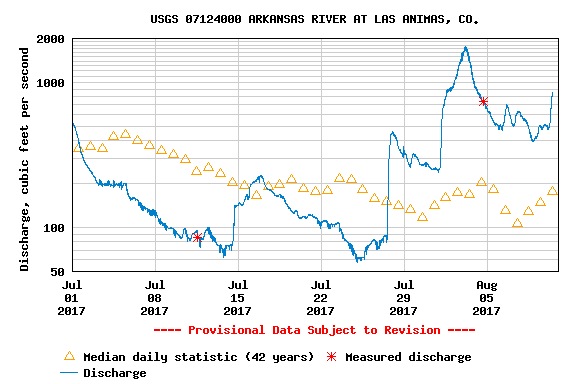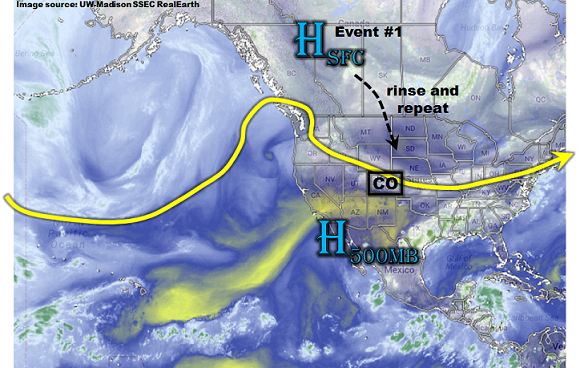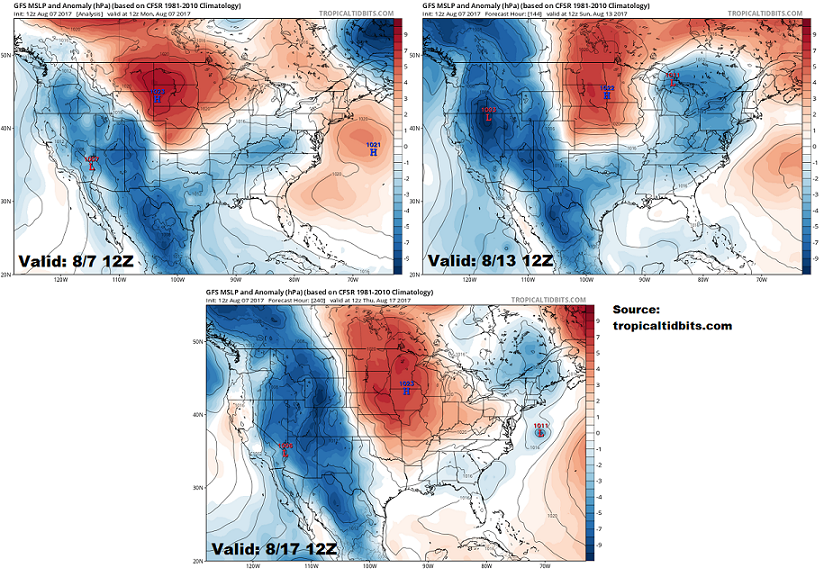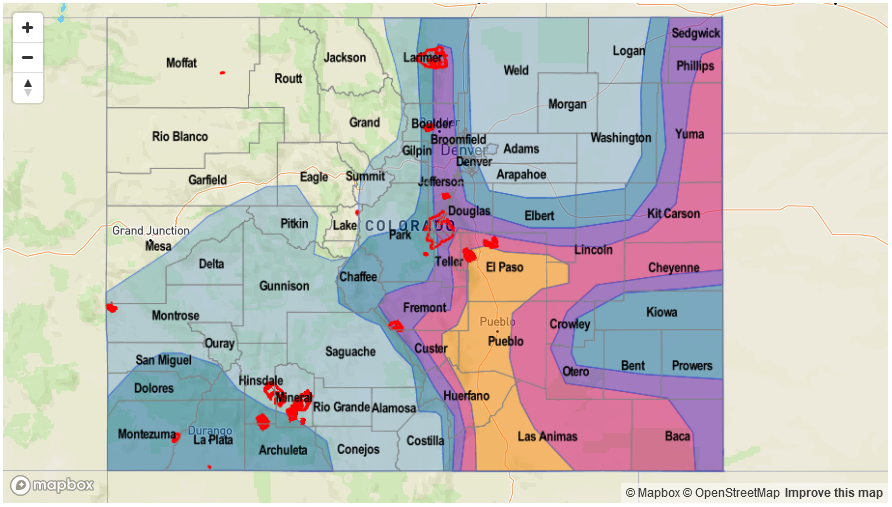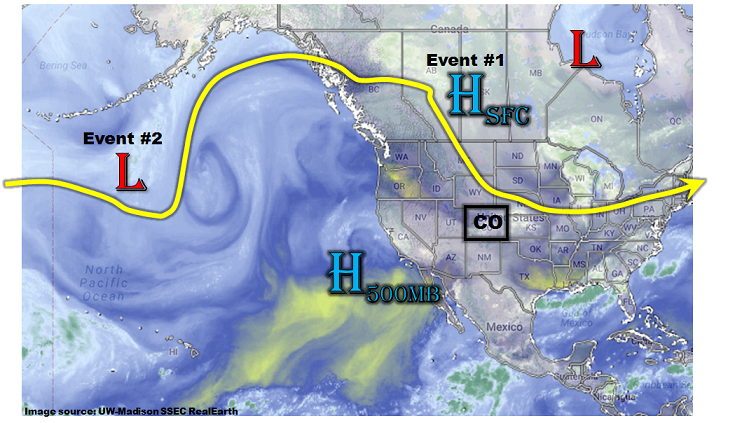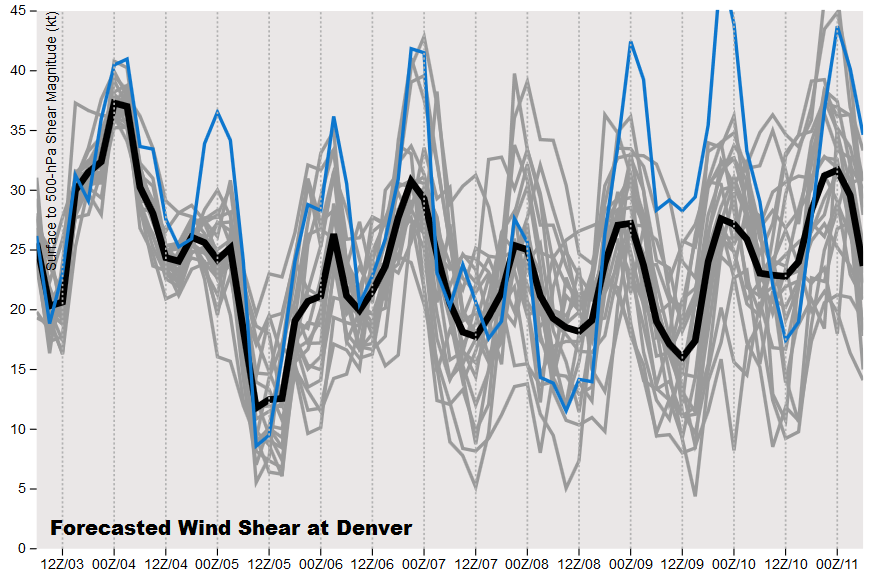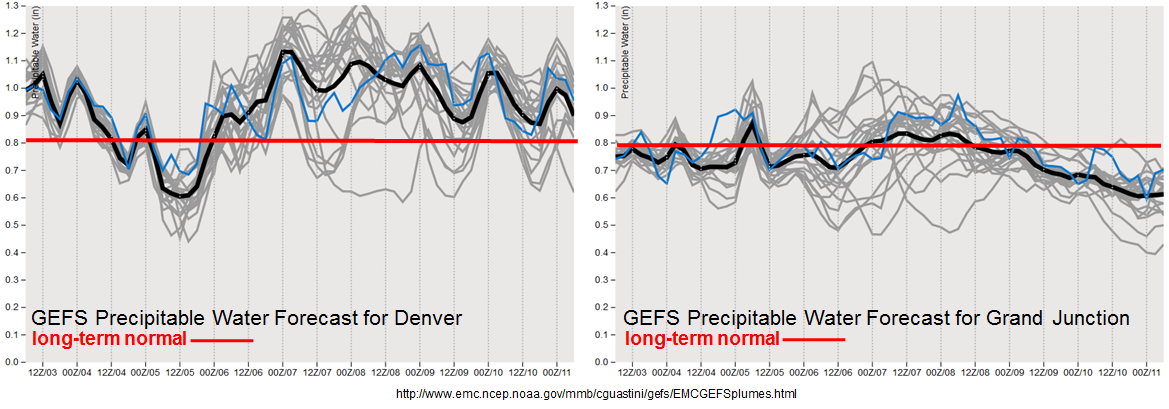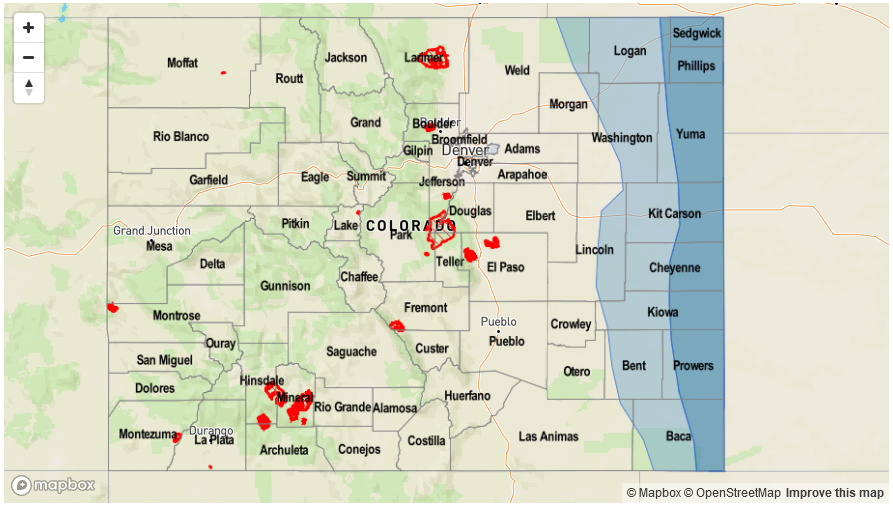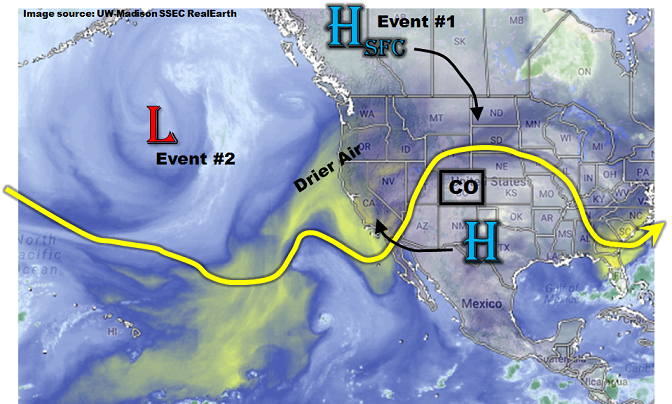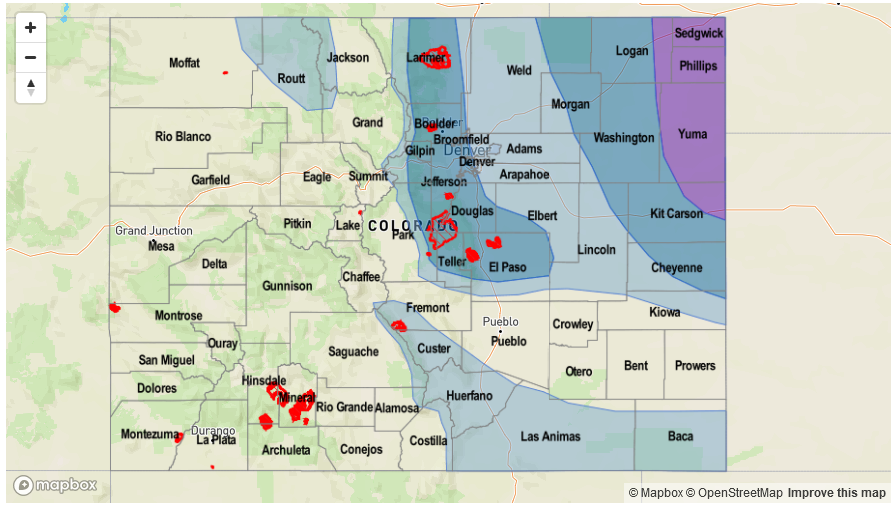Issue Date: Thursday, August 10, 2017
Issue Time: 2:20PM MDT
Valid Dates: 8/11-8/25
There is finally change towards a drier pattern on the horizon, but not before several more days of heavy rainfall and elevated/high flood threat conditions will be endured. As shown in the northern hemisphere water vapor image, below, a surface high pressure is currently positioned over the northern Great Plains. The clockwise circulation around this high is transporting high moisture into eastern Colorado. At least one more such surface high pressure is expected to move southward over the next 72-120 hours, which will keep elevated moisture in place. Additionally, a strong jet remains overhead, which is supporting relatively cool temperatures at mid-levels (and surface), allowing for daily round of scattered to numerous showers and storms east of the Continental Divide.
Thus, the prolonged flood threat will continue through early next week, labeled as Event #1 for this Flood Threat Outlook. At this time, it appears that relatively isolated heavy rainfall, and flooding, will be the primary impact. However, the arrival of a new surface boundary on Sunday prompts a High threat, especially given that the region under threat appears to be the Southeast Plains. We cannot overstate the need to monitor the Arkansas River and its tributaries as they remain at elevated levels. The 40 day trace from the Las Animas USGS gage, below, shows that the river has been at significantly elevated levels since late July. Thus, it remains very vulnerable since even modest rainfall and runoff could cause flooding. At this time, we do not expect major riverine flooding within Colorado’s borders, though stay tuned to daily Flood Threat Bulletins for a more detailed look.
After the middle of next week, we foresee a significant pattern change, as noted by the surface pressure anomaly maps below. Note the high pressure anomalies early in the period, which is supporting the moist easterly flow and heavy rainfall activity. By the middle of next week, a surface low pressure is expected to develop. This means generally downsloping low-level winds, also accompanied by a transport of relatively dry mid-level air from the Great Basin. Thus, we have only identified one precipitation event for this 15-day Outlook, which is described in more detail below.
Event #1: Friday (8/11) through Wednesday (8/16)
Prolonged Elevated/High Flood Threat for daily rounds of heavy rainfall east of the Continental Divide; Arkansas River basin will be vulnerable to minor riverine flooding
With continued elevated moisture (PW expected to stay at or above 1 inch east of the Continental Divide), daily rounds of scattered to numerous shower and thunderstorm activity are expected. Storms will form off the higher terrain first but then track eastward for at least several hours, especially over the Palmer and Raton Ridges. Max 1-hour rainfall up to 2.4 inches (east) and 1.9 inches (west) will be possible, supporting isolated flash flooding, small stream flooding and street flooding in urban areas. In addition, max 3-hour rainfall up to 3.1 inches (east) and 2.5 inches (west) will support mud flows and debris slides, especially in regions with saturated soils. In addition, the threat of isolated severe weather (mainly large hail) will exist especially towards the Kansas border.
At this moment, Sunday appears to be the most vulnerable day, due to the expected widespread coverage of heavy rainfall in the Southeast Plains. The Arkansas River and its major tributaries will be in a particularly elevated risk of riverine flooding, especially towards the Kansas border.


